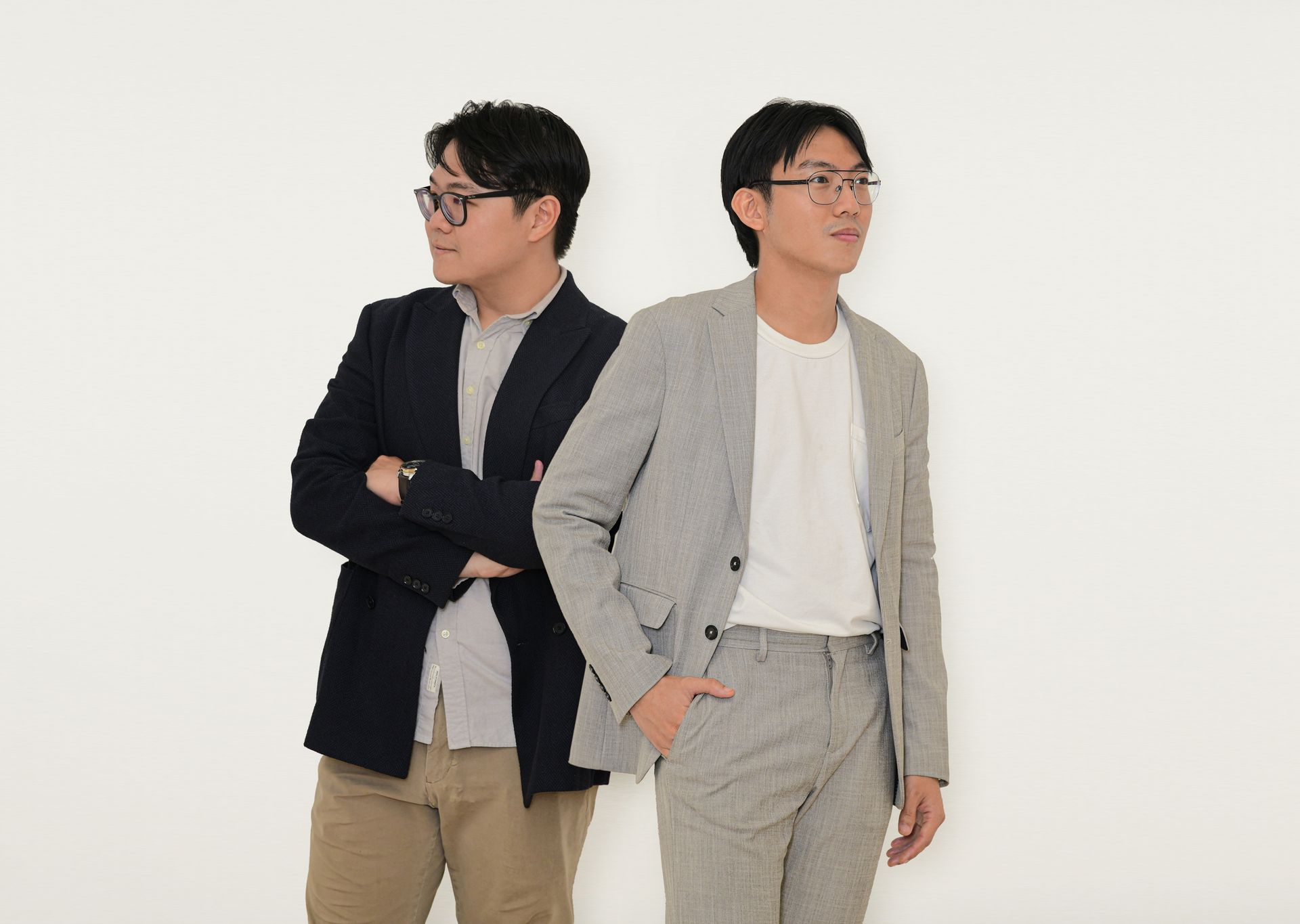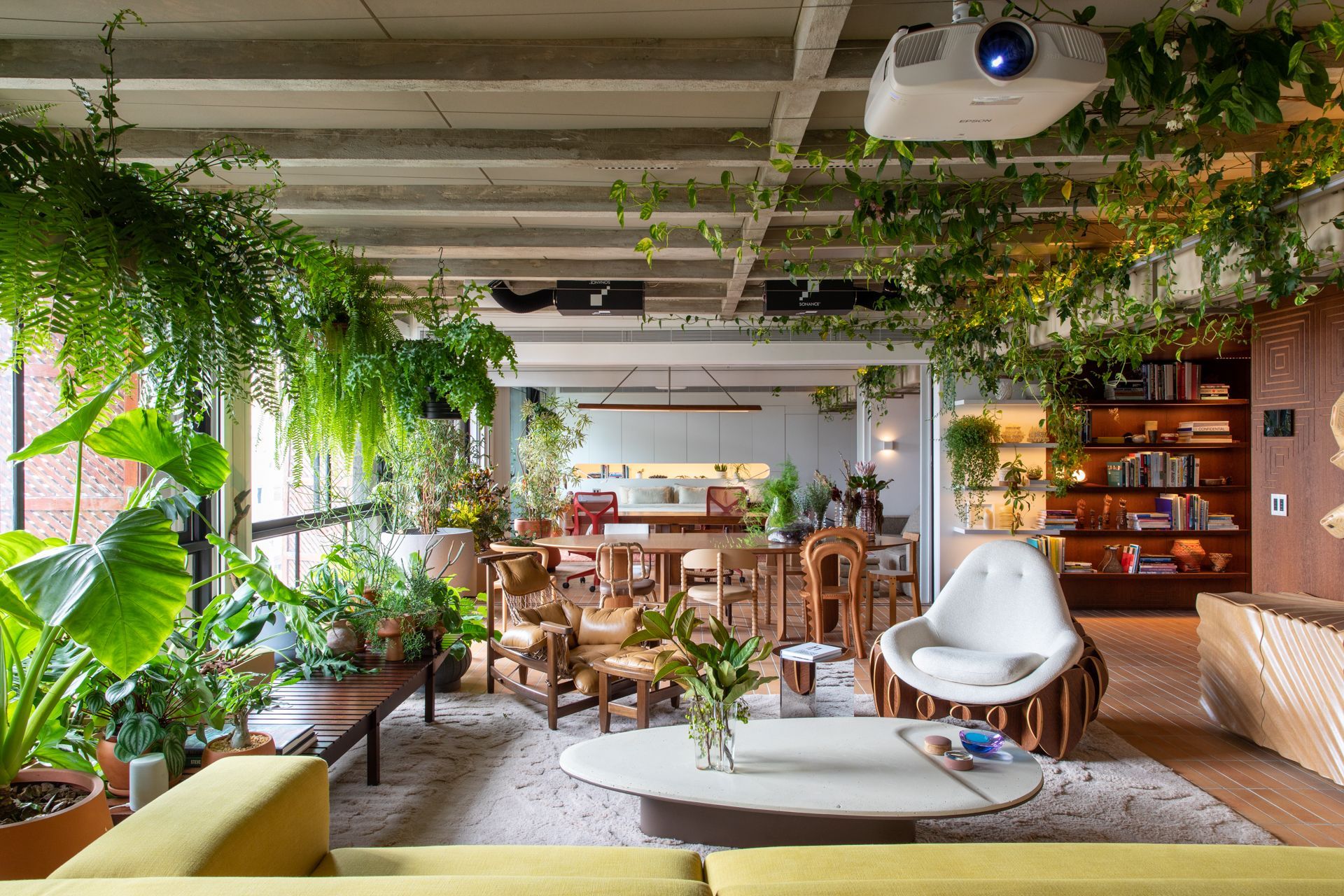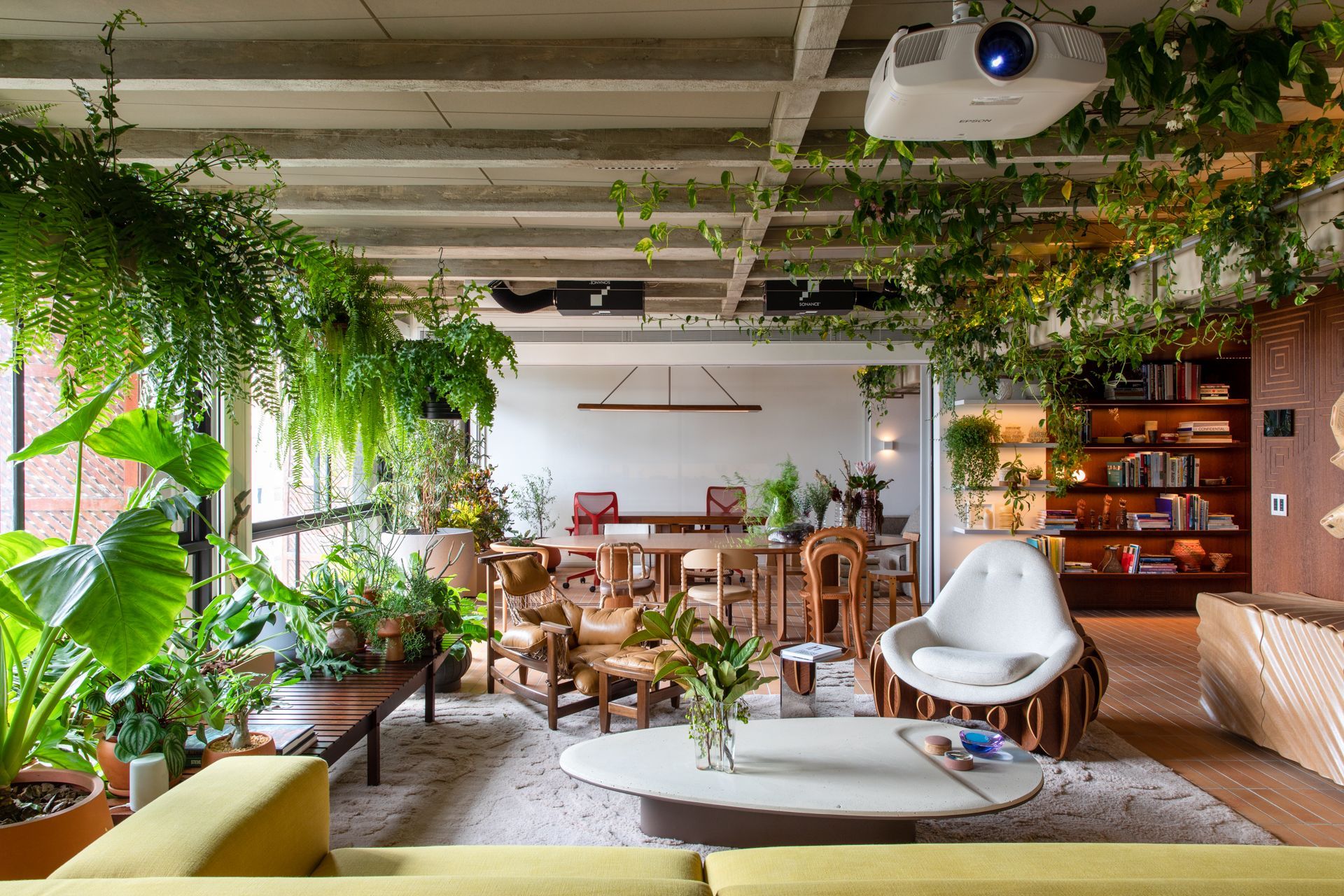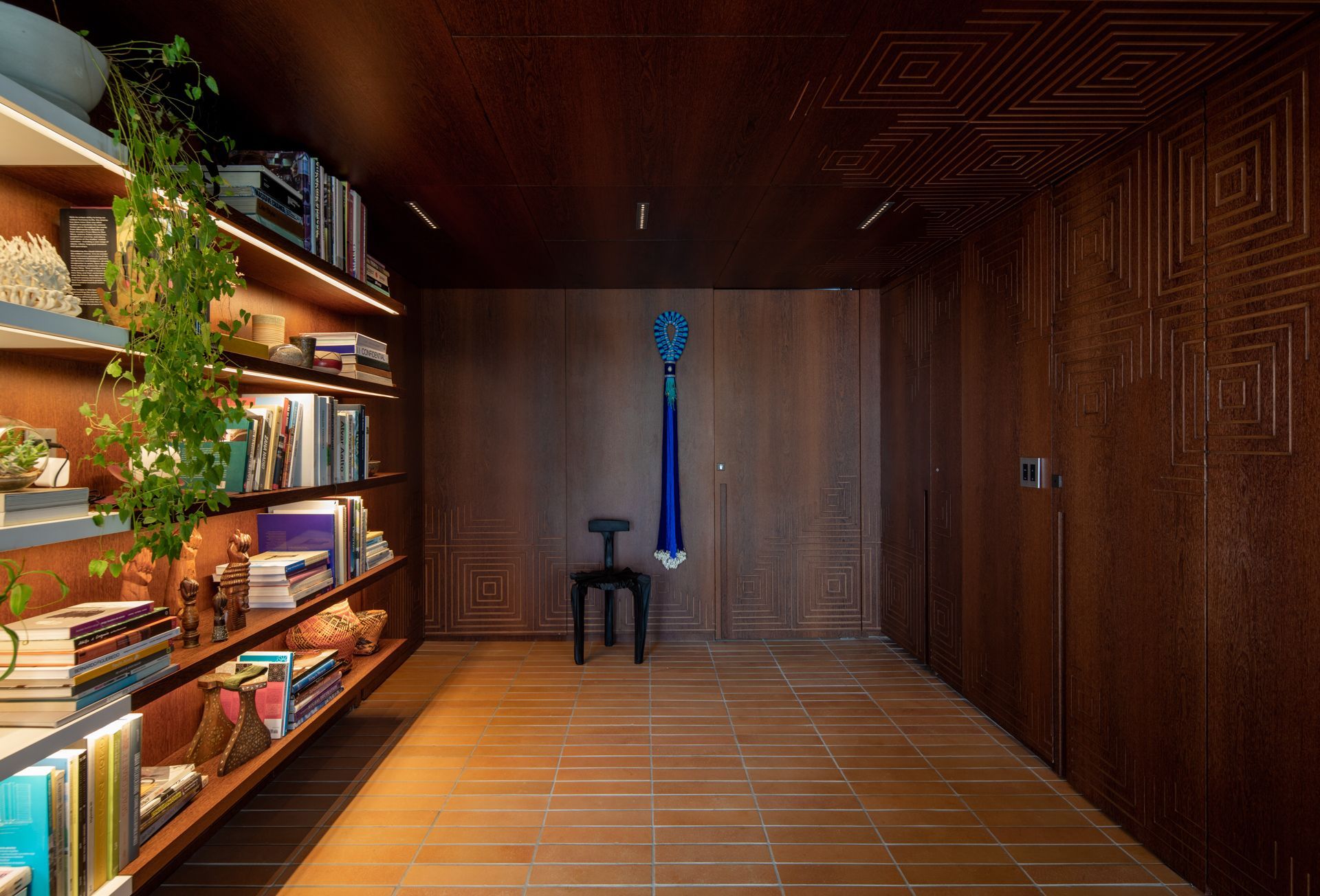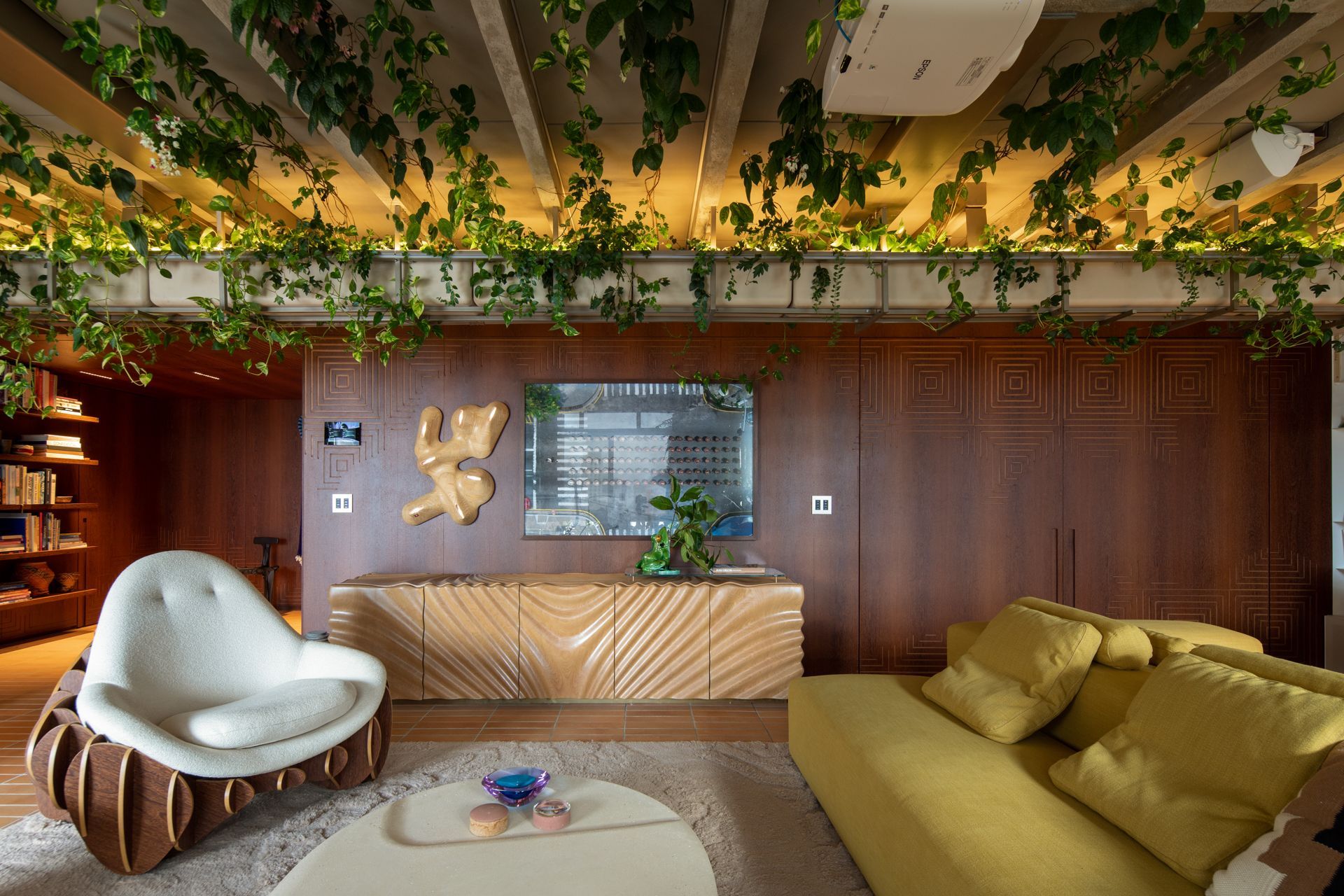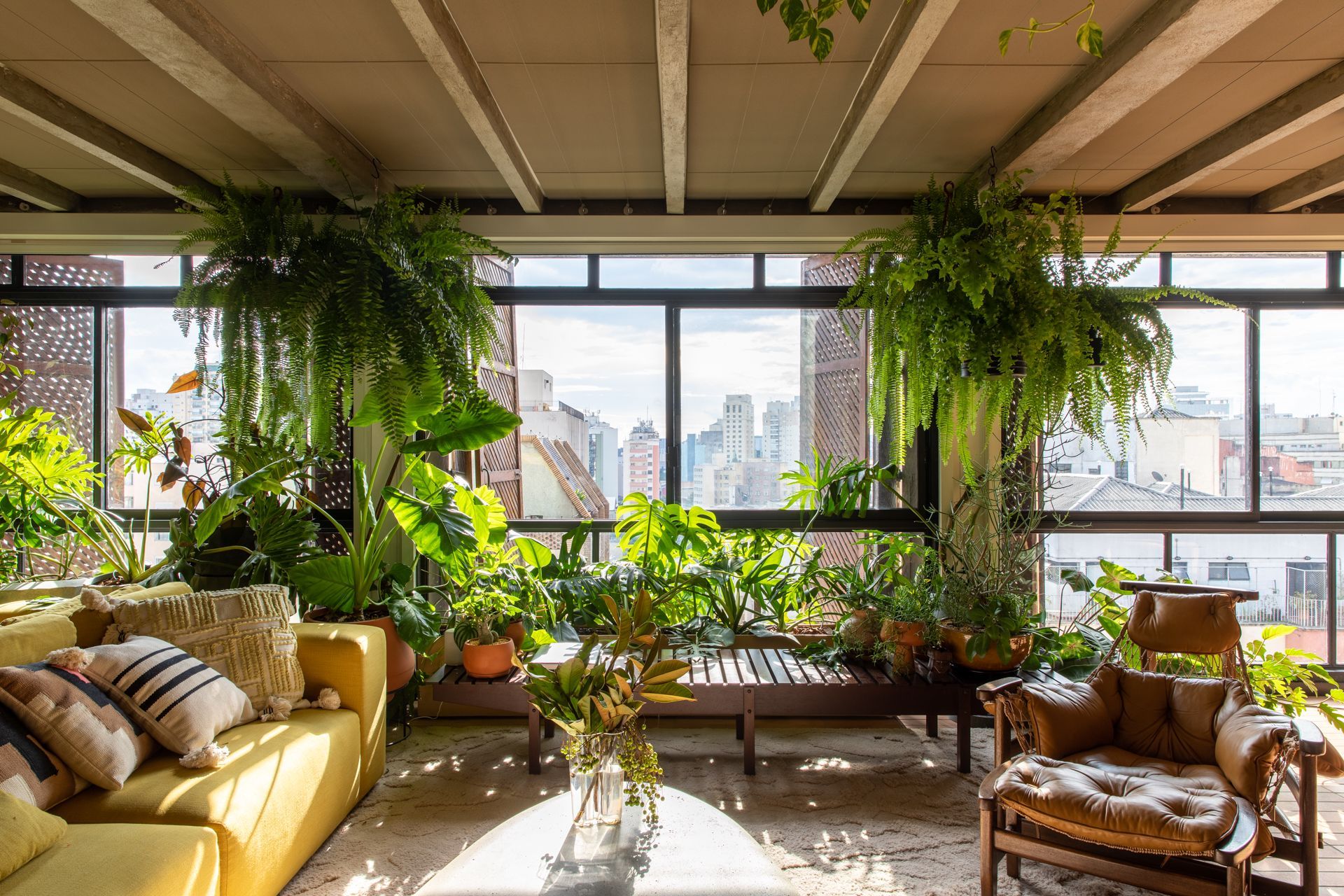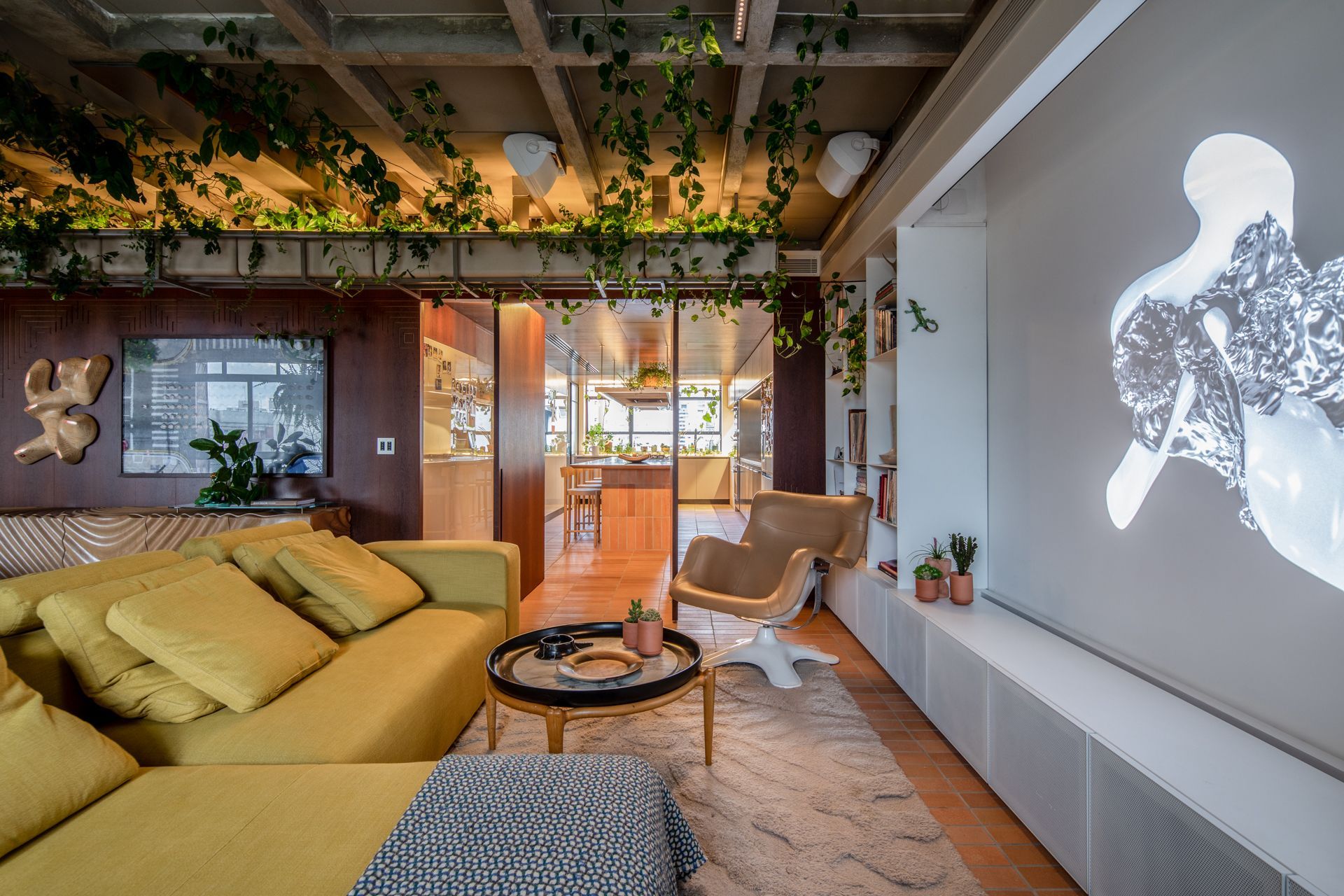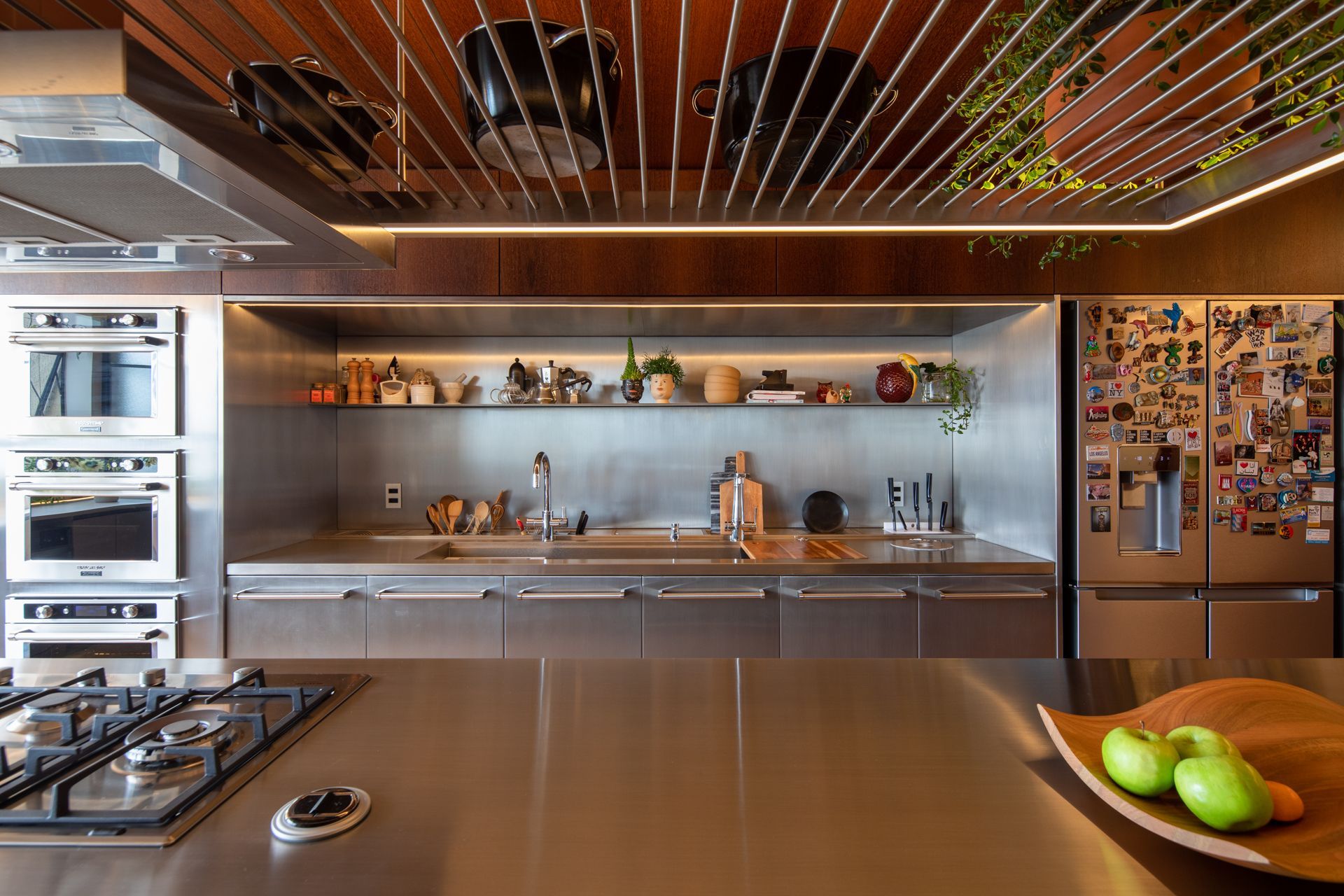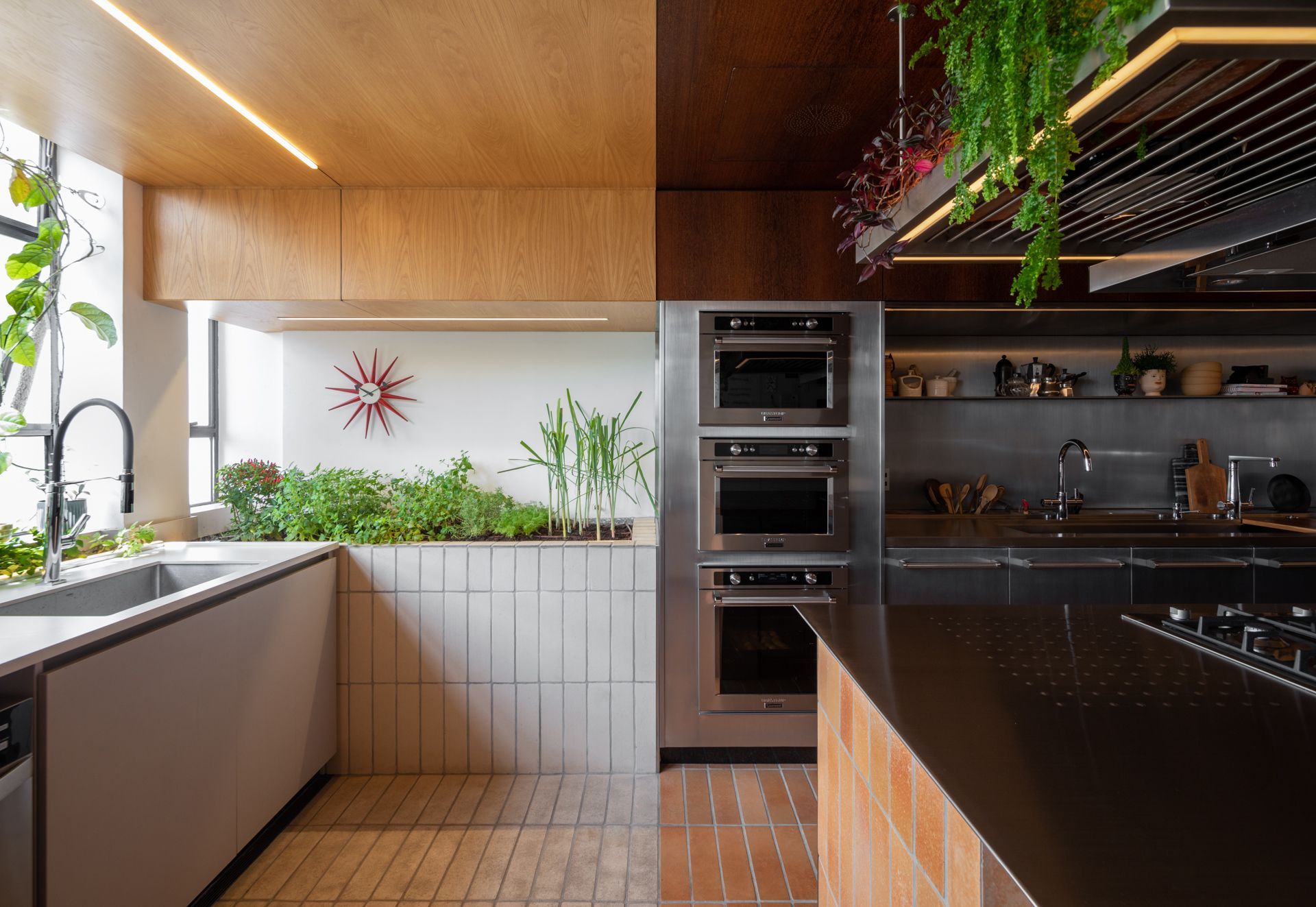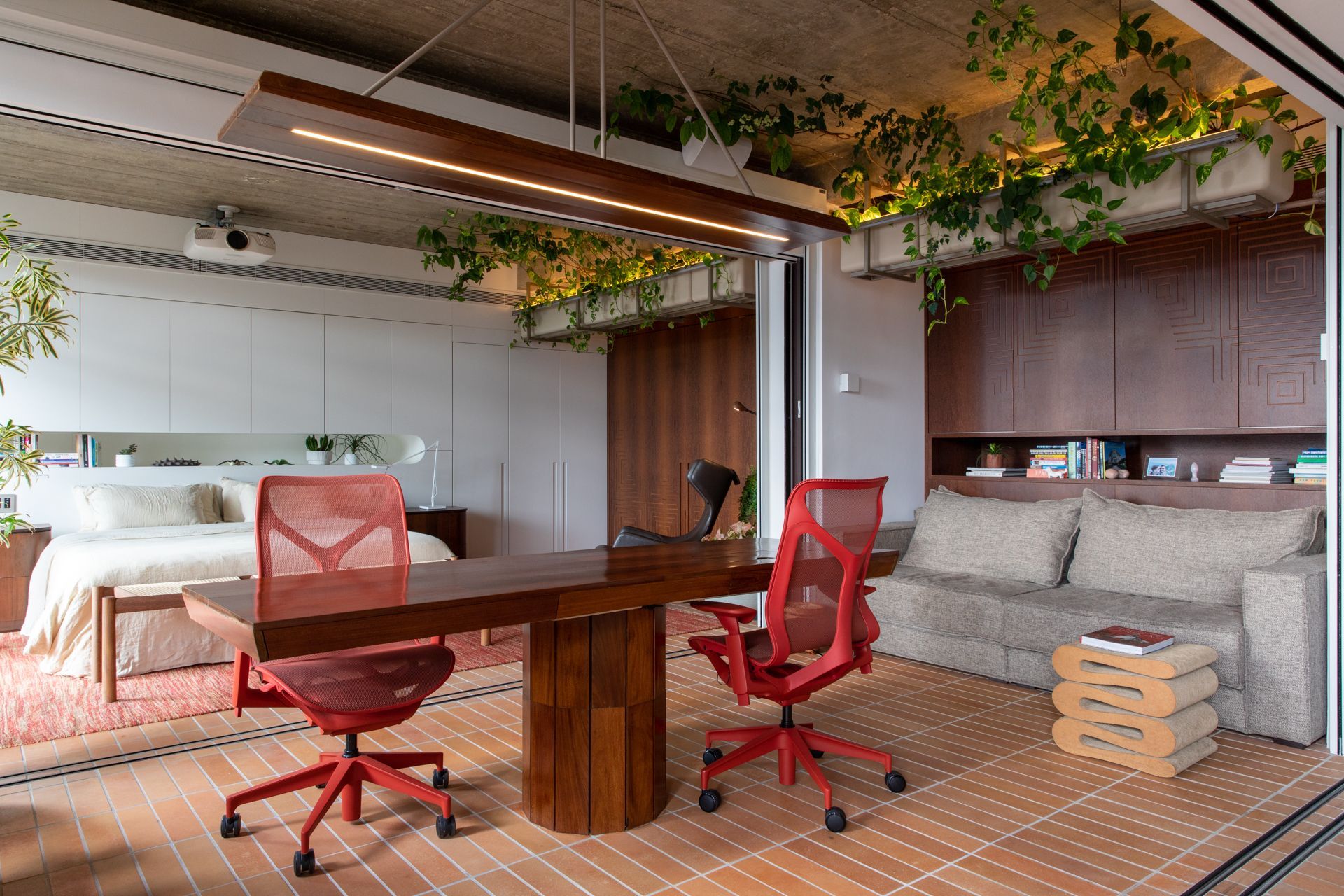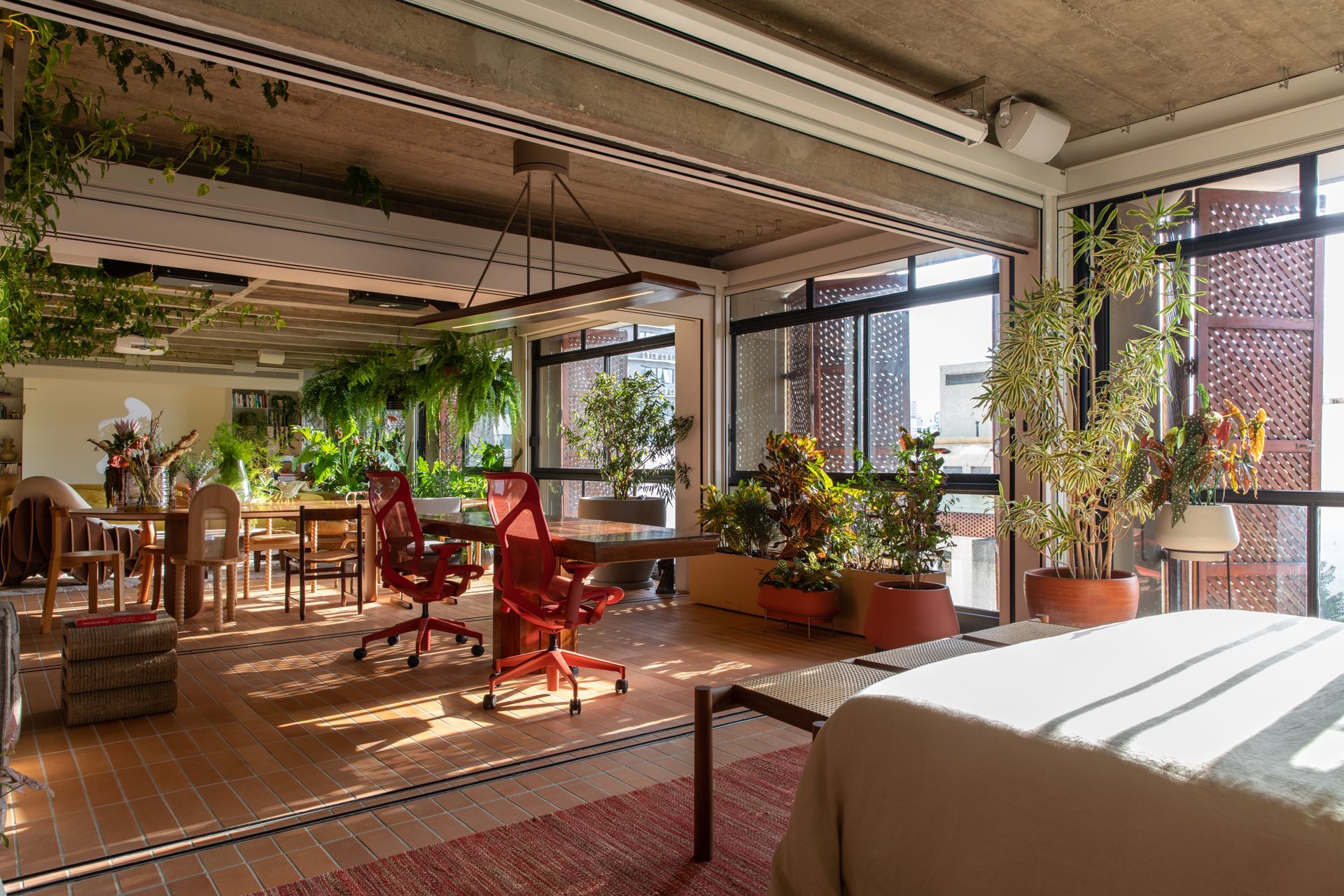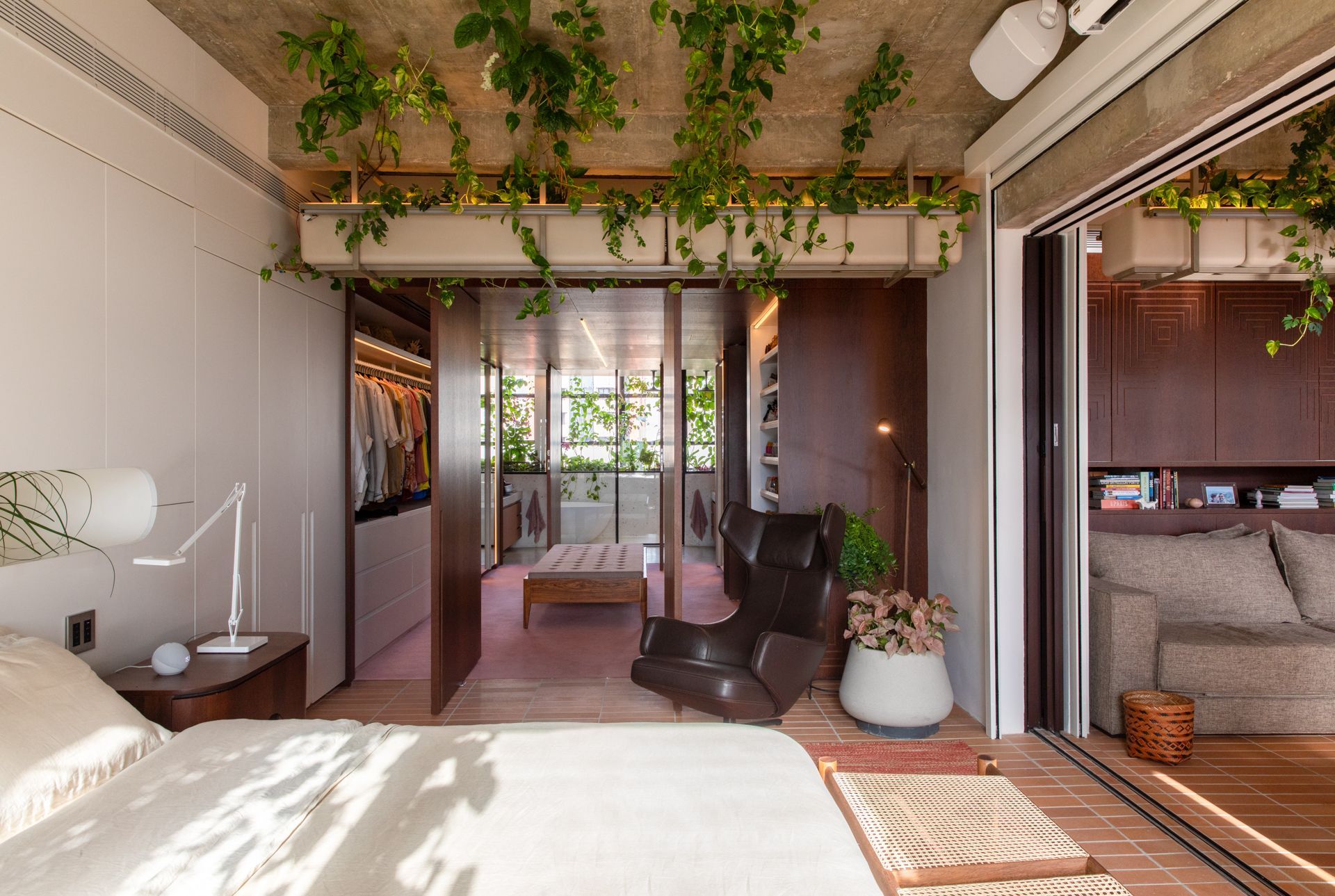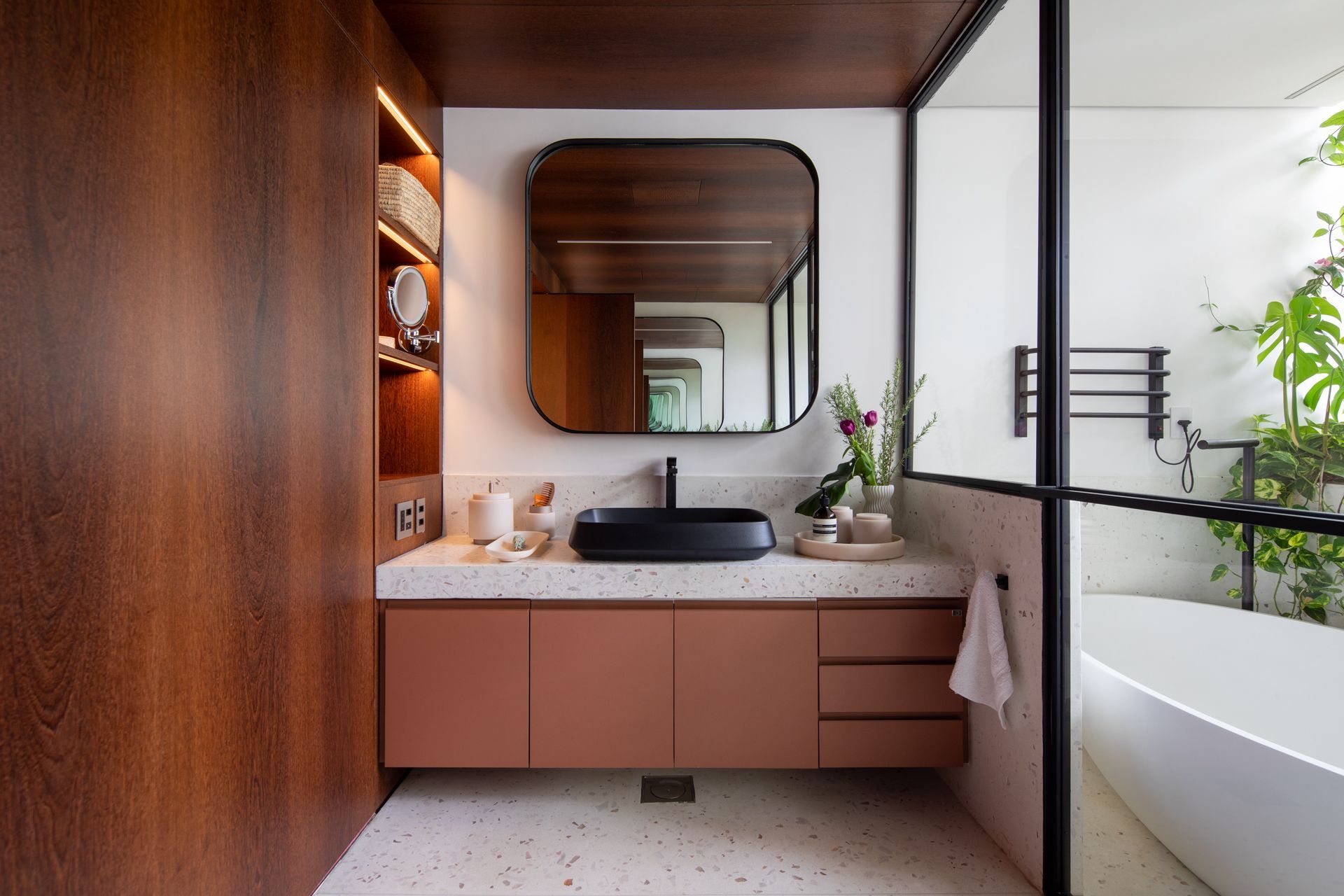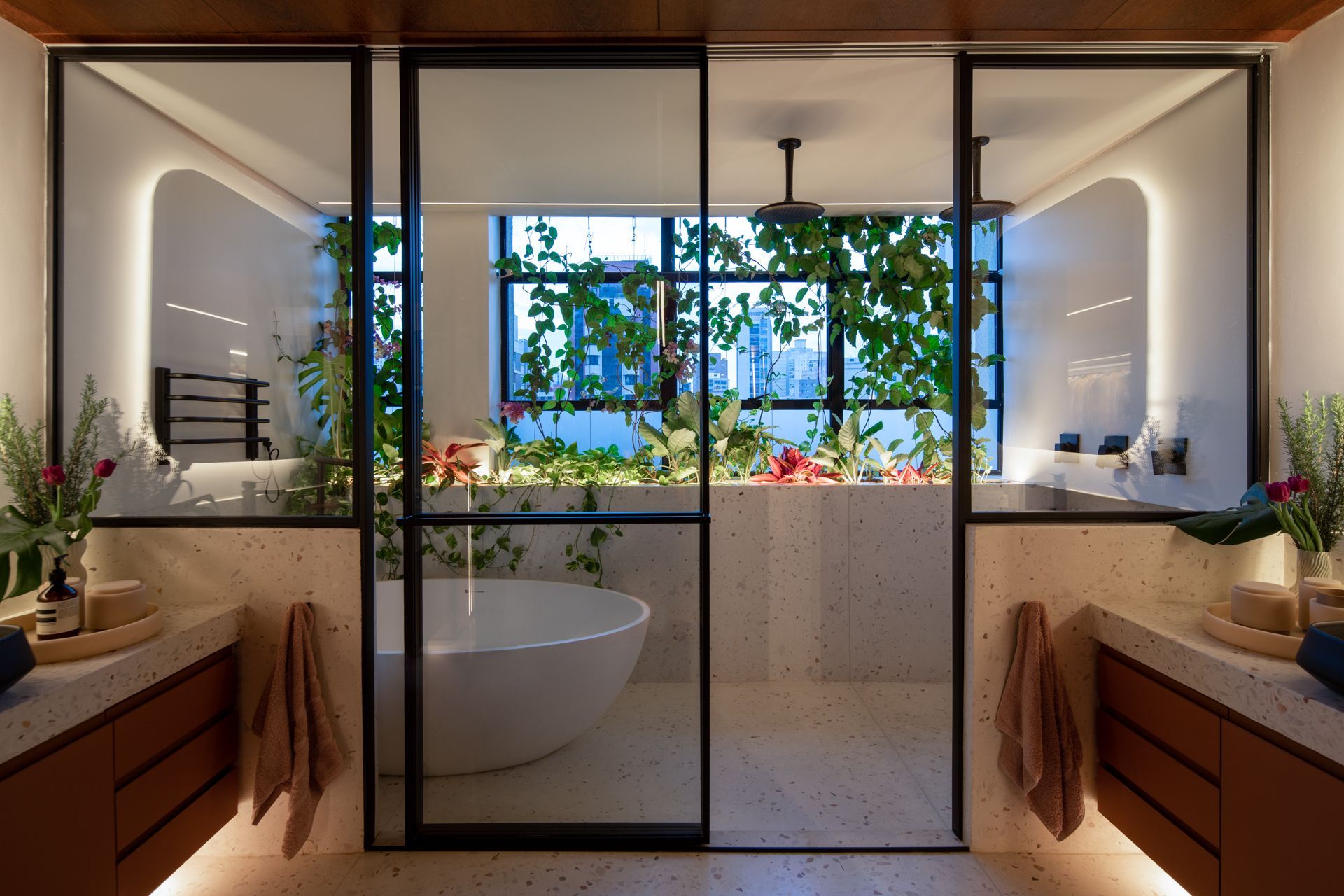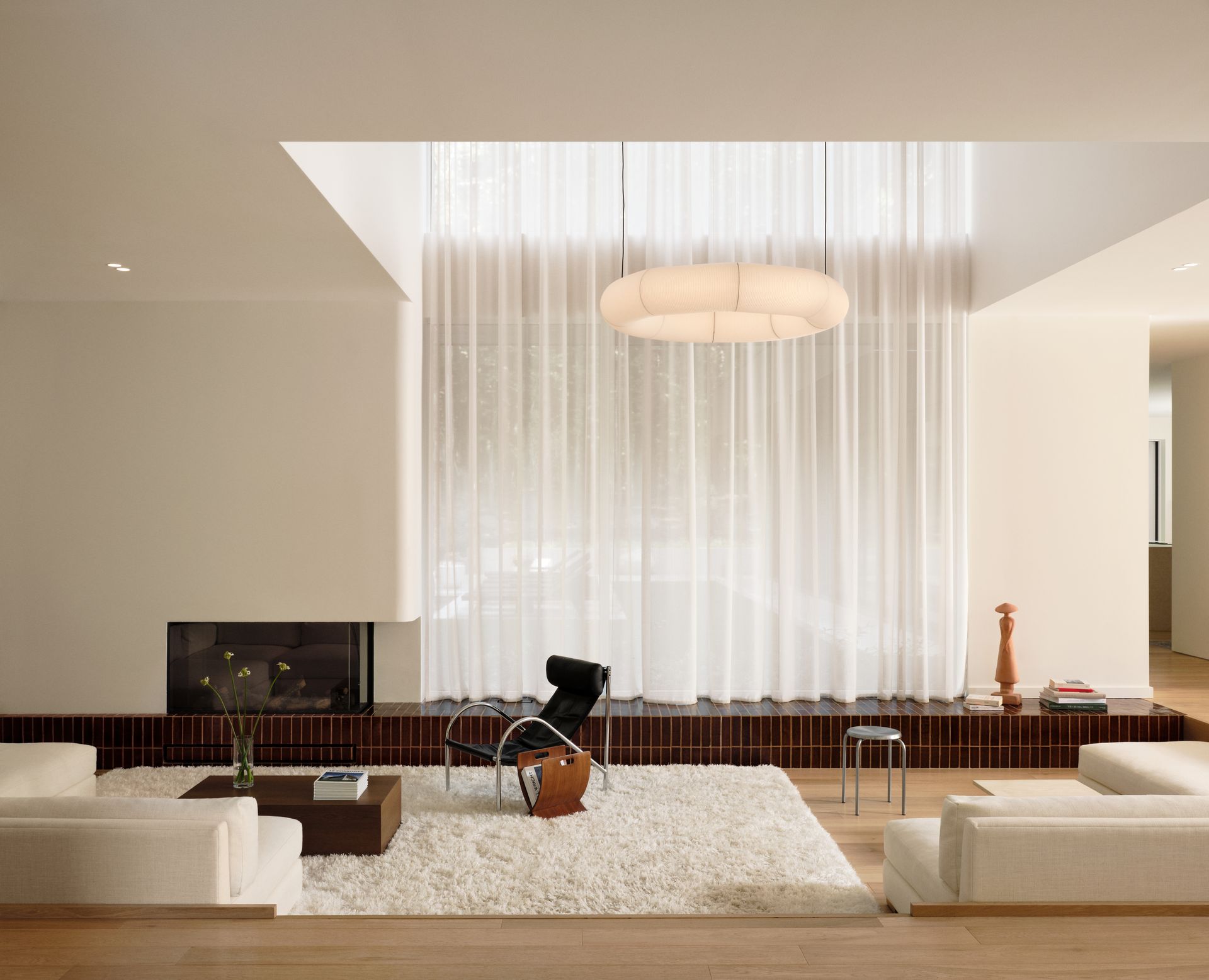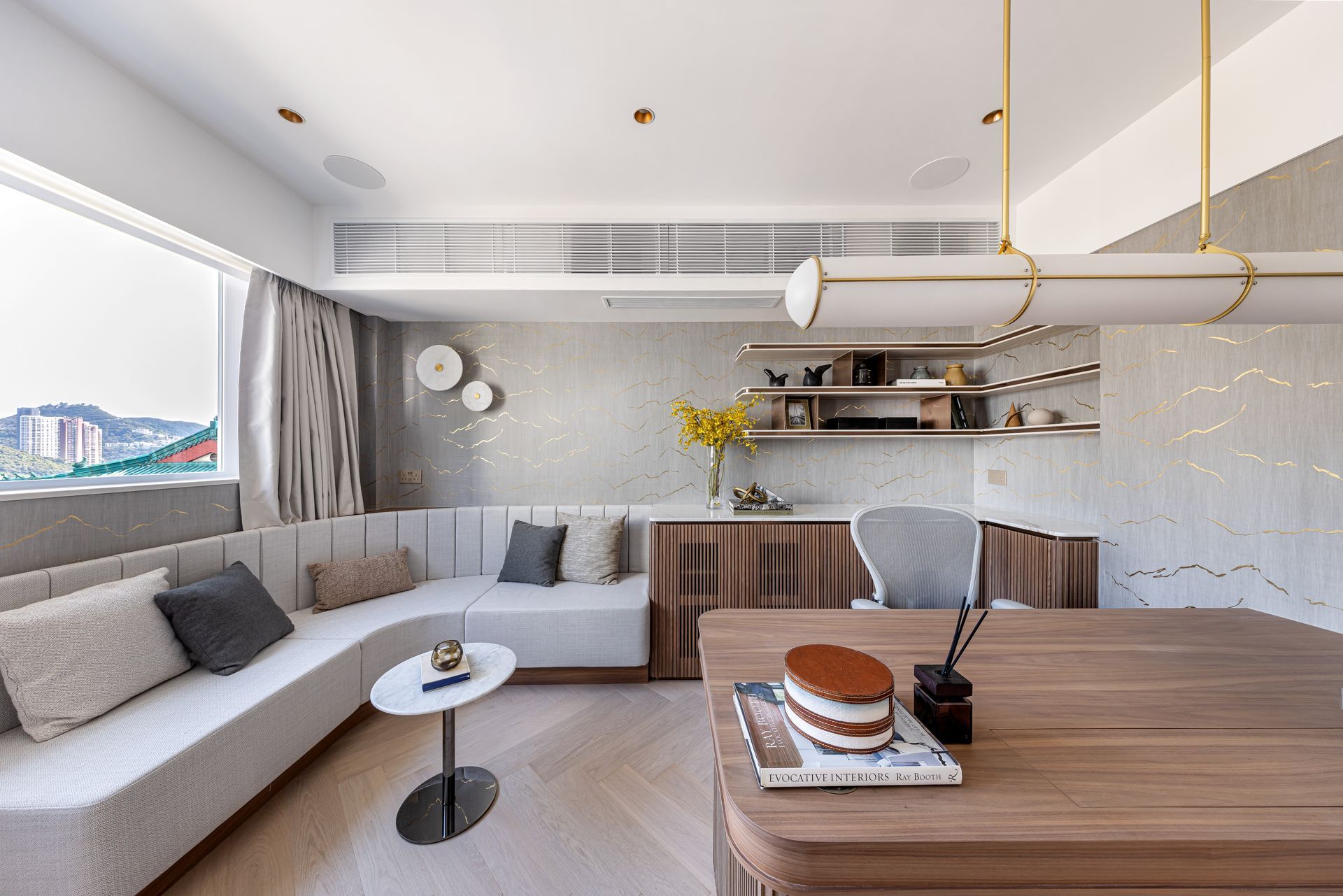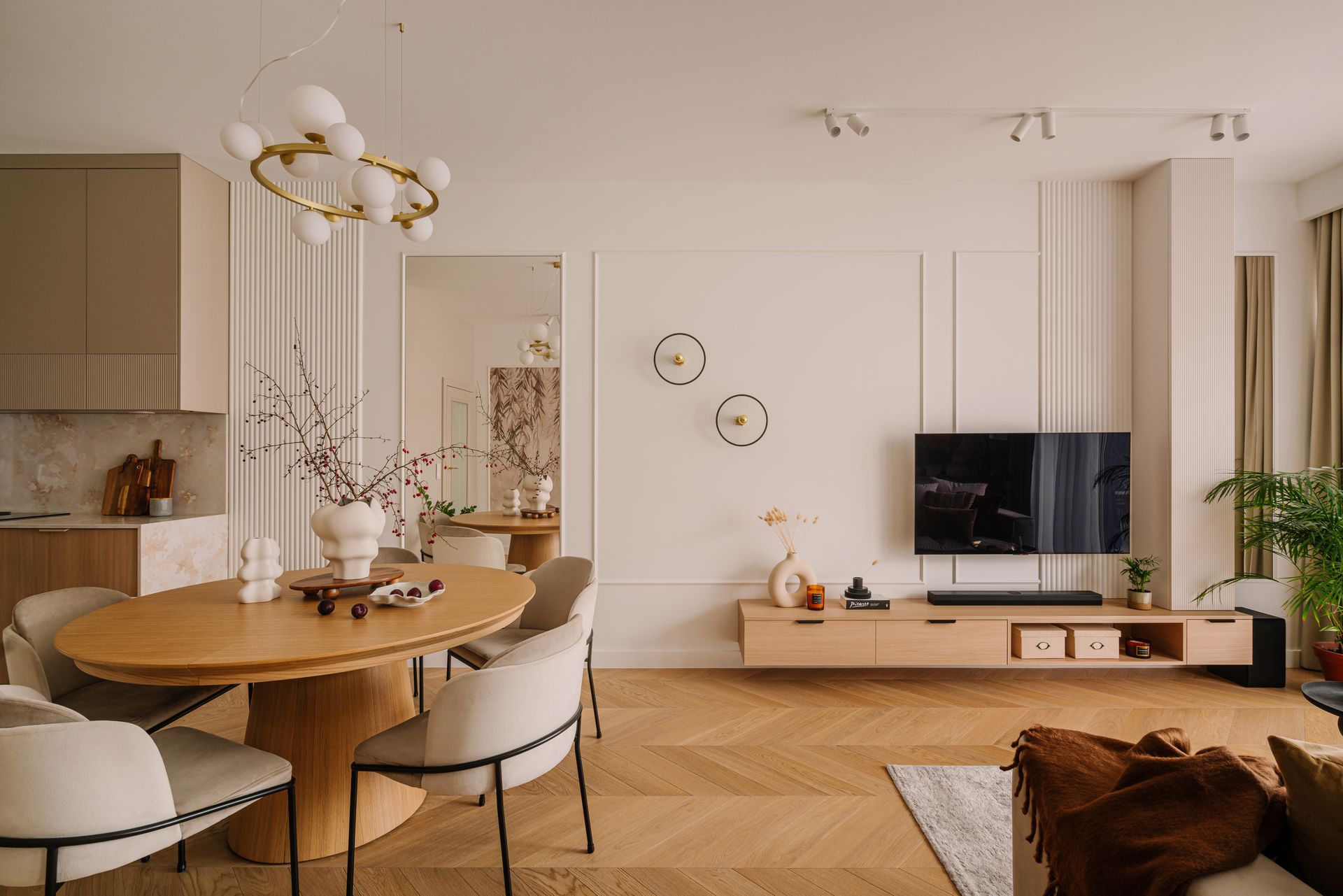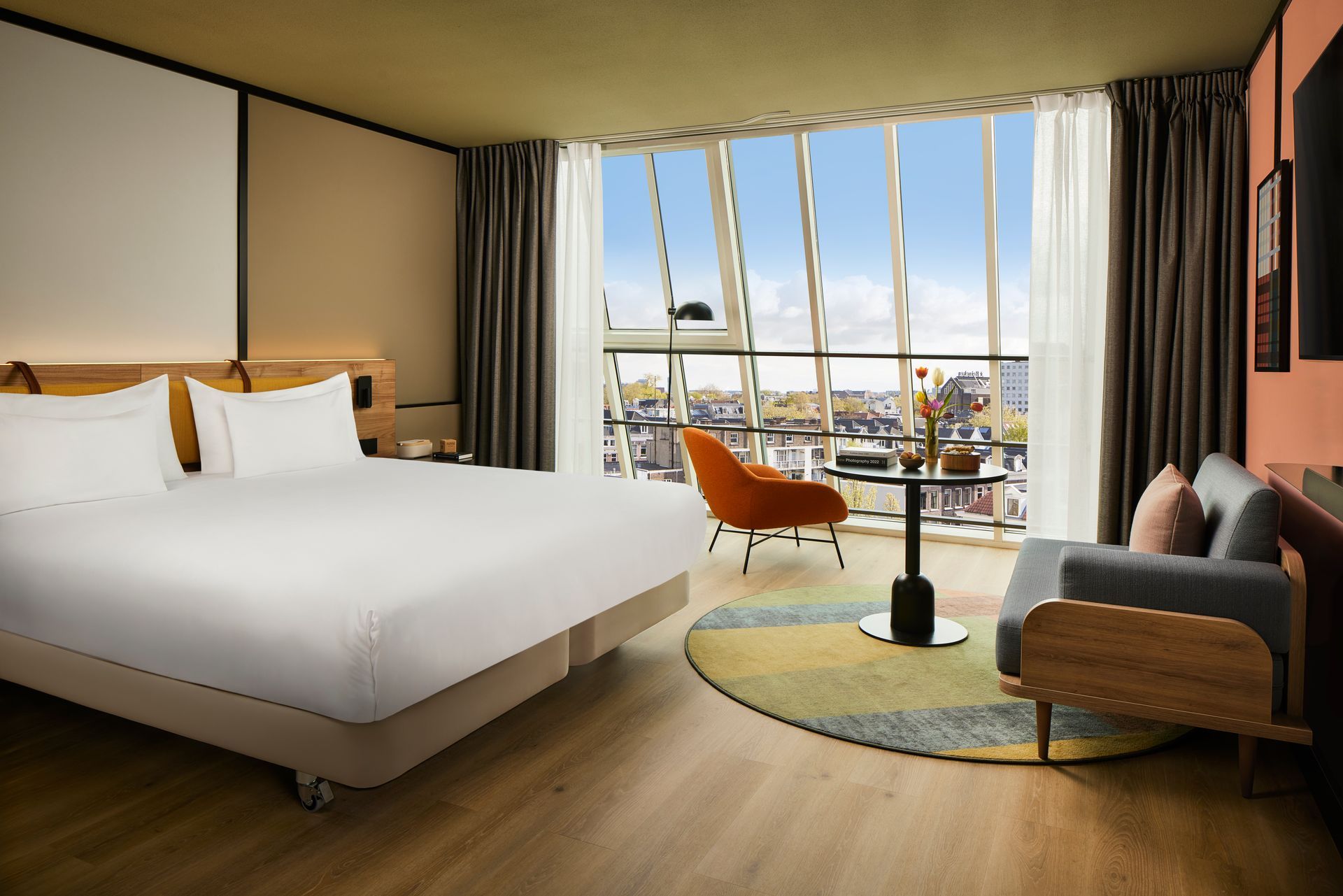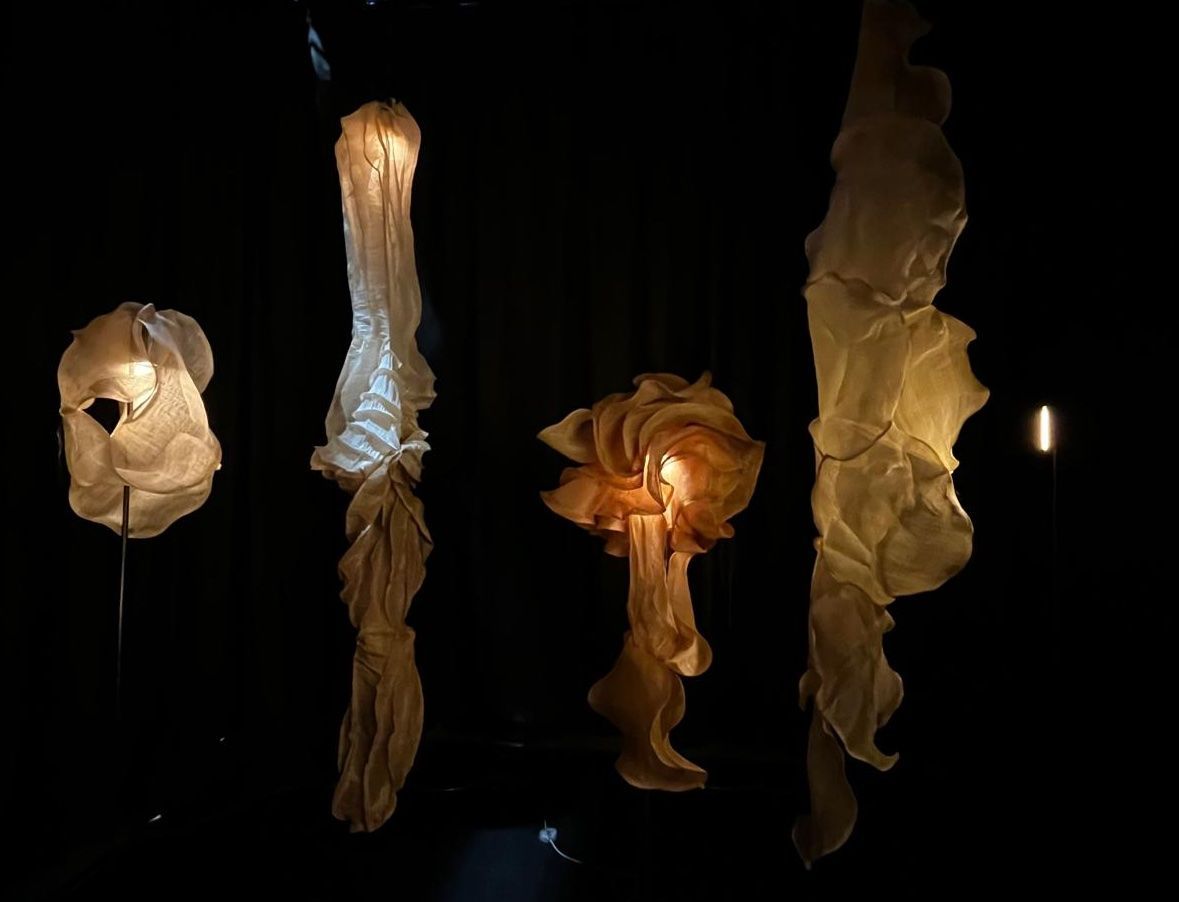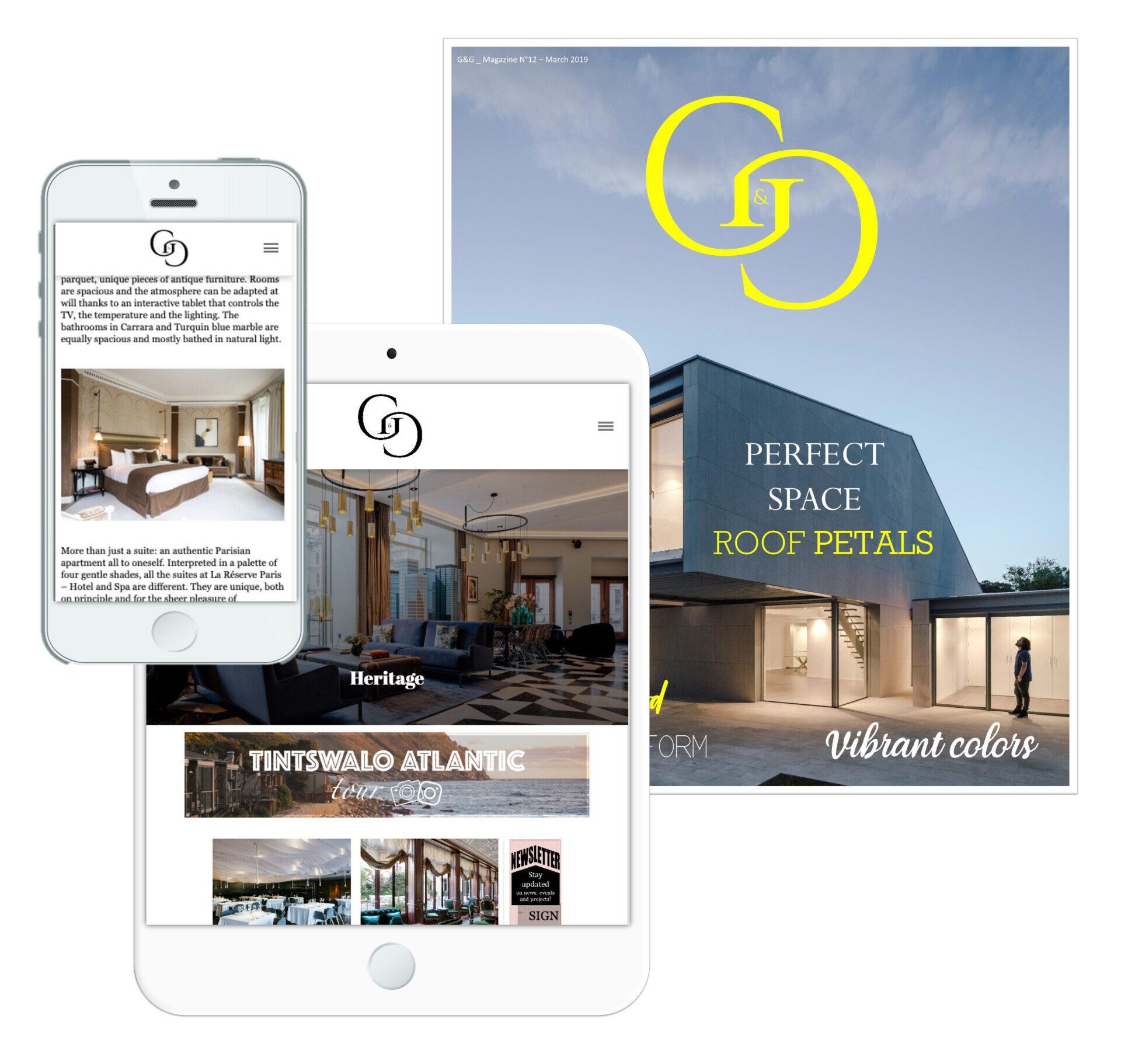Urban Forest
Estudio Guto Requena transformed an icon of São Paulo's modern architecture, dating from 1962 and designed by Botti and Rubin, into a hyper-connected apartment that prioritizes sustainable solutions.
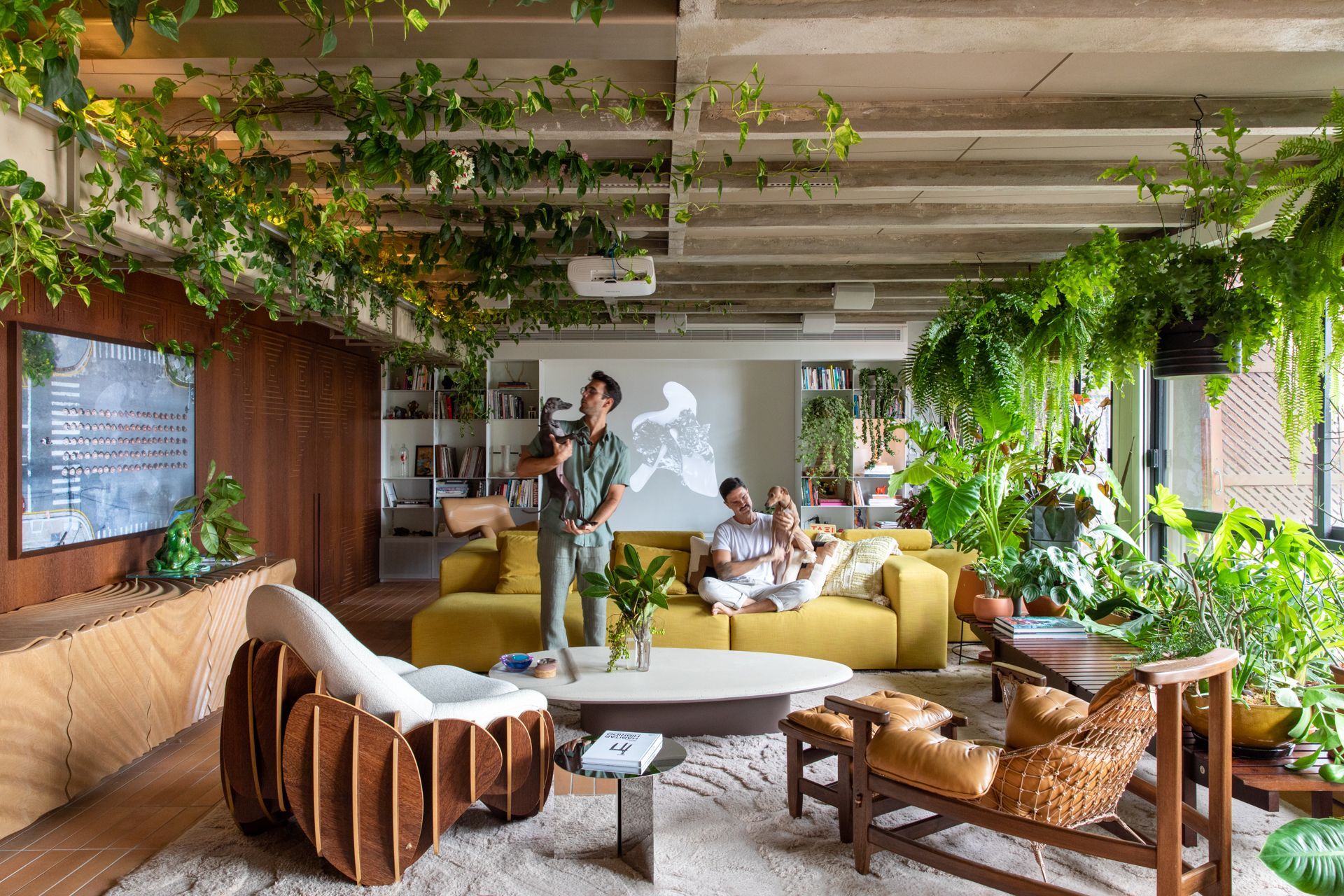
The project breaks with the traditional setting of the apartment which used to reproduce the so-called bourgeois residential tripartition, originated in France in the XVIII century and which divides the houses into social, intimate and services areas. A flexible floor plan allows the movement of walls or pieces of furniture, and includes an active participation of the resident in its constant resetting. At the apartment, instead of designing a project based on the rooms, such as the bedroom, living room and kitchen, the design team sought to design a house based on its activities, such as working, sleeping, eating, receiving friends, taking care of the clothes or relaxing. The result is a dynamic and interactive architecture, likely to accommodate different daily practices. Acoustic glass sliding doors and large panels of automated curtains blurs the boundaries and allow you to create more social or more private moments, integrating or isolating spaces.
The living room receives a wide cinema with a 120” screen which changes into a meeting room with integrated camera and microphone for calls. By using the same projector, during leisure time, the wall becomes a digital gallery, receiving NFT works from the residents’ collection. On festive days, with the rapid displacement of some pieces, the room becomes a dance floor, with reactive audio lighting attached to the suspended flower box.
Research on parametric design is one of Estudio Guto Requena's passions, present in the majority of its projects. Facing all the environments of the front facade, a wooden panel of the sucupira kind (a native Brazilian species) draw a transition between the more collective areas and the more intimate ones. This panel was created from algorithms, analyzing the design of Albina's building perforated facade panels, like muxarabis, designed in 1956, and which originally served to shade the interior and to reduce the internal temperature of the apartment. By scanning the original drawings provided by Botti and Rubin office, a computer code was created to simulate the path of the sun on this facade. Thus, the resulting graphic pattern has its thinner or thicker lines depending on the distance from this imaginary axis. This wooden panel, in addition to paying tribute to the building itself, adds texture to the wide balcony and dialogues with several pieces of parametric furniture, such as the Attraction buffet, the Turing rug and the Heart Wall art installation, all creations signed by Estudio Guto Requena.
The Heart Wall installation is the core of the house. It is an interactive work of art that aims to add a sensitive layer to our home, creating new poetics in design. It was shaped to create cocoons that houses lights. In each cocoon, there is a LED dot that lights up synchronized to a person’s heartbeat, making up a constellation of pulses.
The kitchen is an example of one of the environments that transforms itself according to the resident's wishes. Integrated to the living room by large pivoting doors, it may also function as a meeting place or workstation multiplying the usual uses for this kind of space. It is divided into a preparation and work area (enabled by a countertop, magnetic board and television) and a cleaning area, surrounded by a vegetable garden.
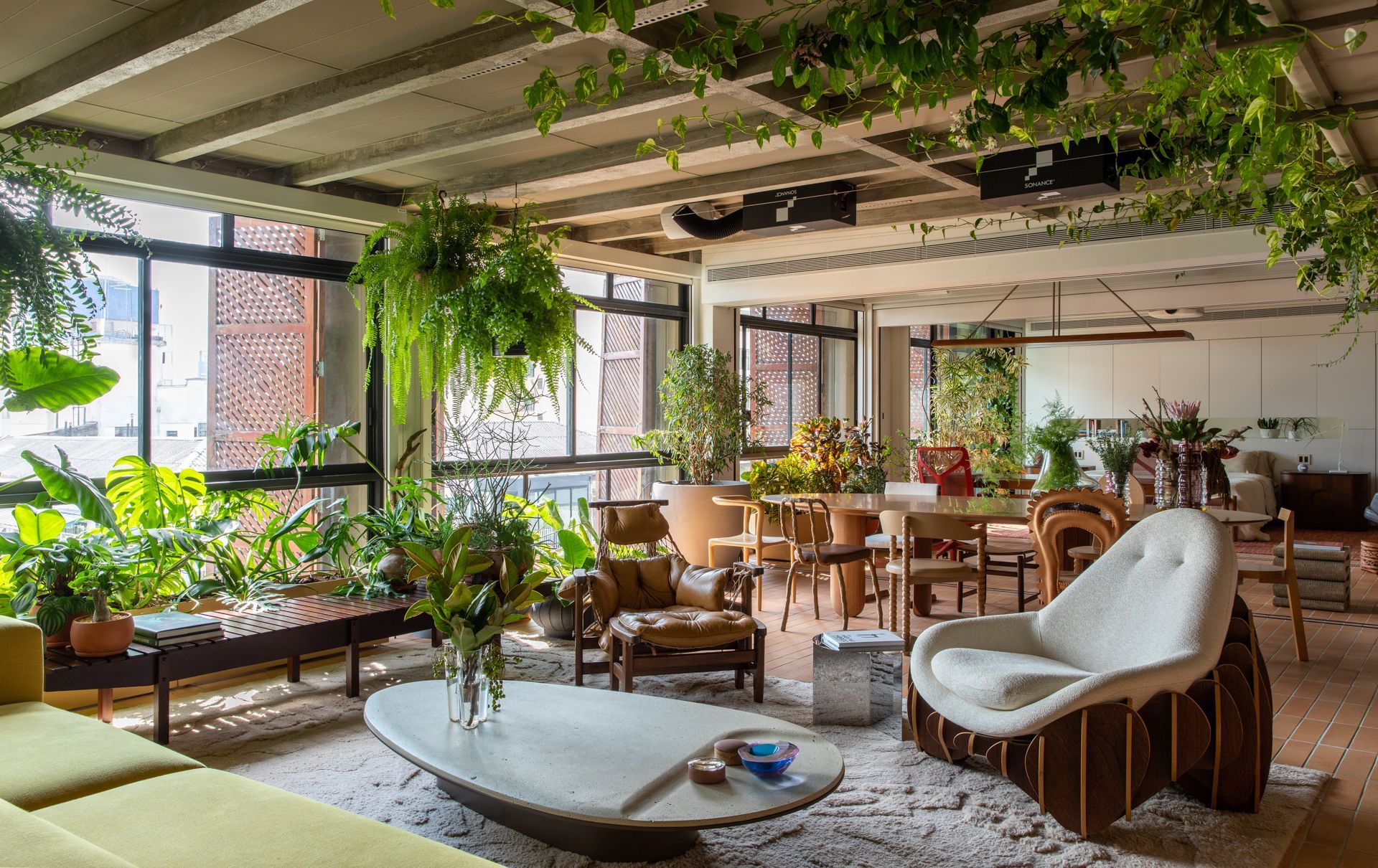
In the office, desk and lamp were made from recycled wood from the old floor. They rotate automatically to favor the window view or to receive DJ’s pickups on party days.
The residents wanted to live in an apartment with a balcony. As this building didn’t offer this possibility, but as it has a glass facade, floor-to-ceiling, they decided to transform the entire apartment into a balcony. A long-suspended flower box crosses all the integrated environments and draws, together with the floor vases and pendants, a private biome formed by different species of plants, many of them native to Brazil. The intense presence of vegetation is capable of creating a specific microclimate, reducing high temperatures and improving air quality, important premises in a city like São Paulo.
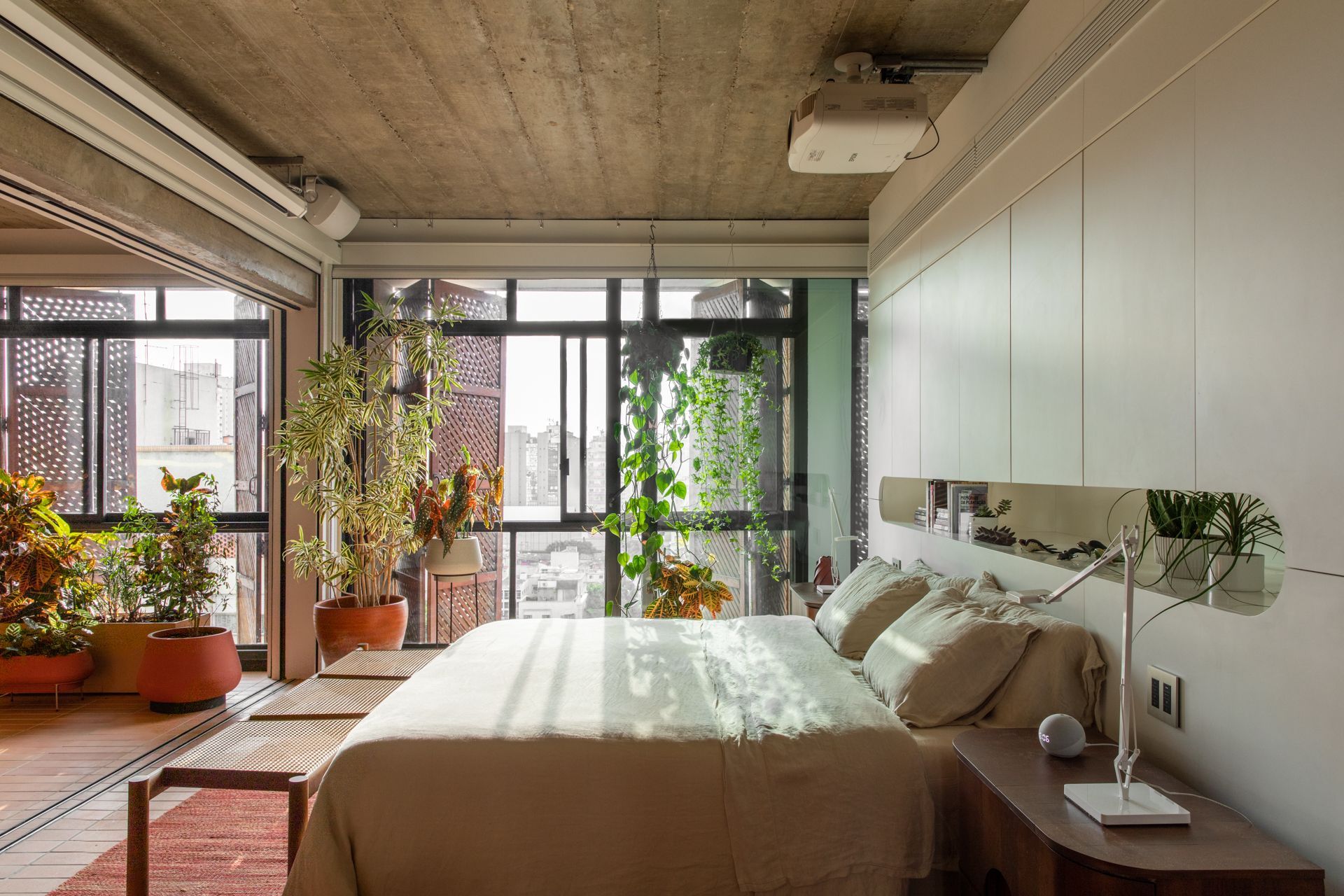
All the furniture and decoration items were specially selected and keep personal stories and collective ones - regarding the history of brazilian design. Important names in national scene such as Sérgio Rodrigues, Jean Gillon, Irmãos Campana, Zanine Caldas and Lina Bo Bardi, meet with pieces by young Brazilian designers such as Guilherme Wentz, Ronald Sasson, Daniel Jorge, Lucas Neves, Carol Gay, Jacqueline Terpins, Ovo Design, PAX Arq and Alva Design. These pieces are mixed with other international iconic names like Maarten Baas, Antonio Citterio, Yrjo Kukkapuro, Le Corbusier, Jasper Morrison and Frank Gehry. In addition, Estudio Guto Requena itself presents a series of prototypes in this project.
SHARE THIS
Subscribe
Keep up to date with the latest trends!
Contribute
G&G _ Magazine is always looking for the creative talents of stylists, designers, photographers and writers from around the globe.
Find us on
Home Projects
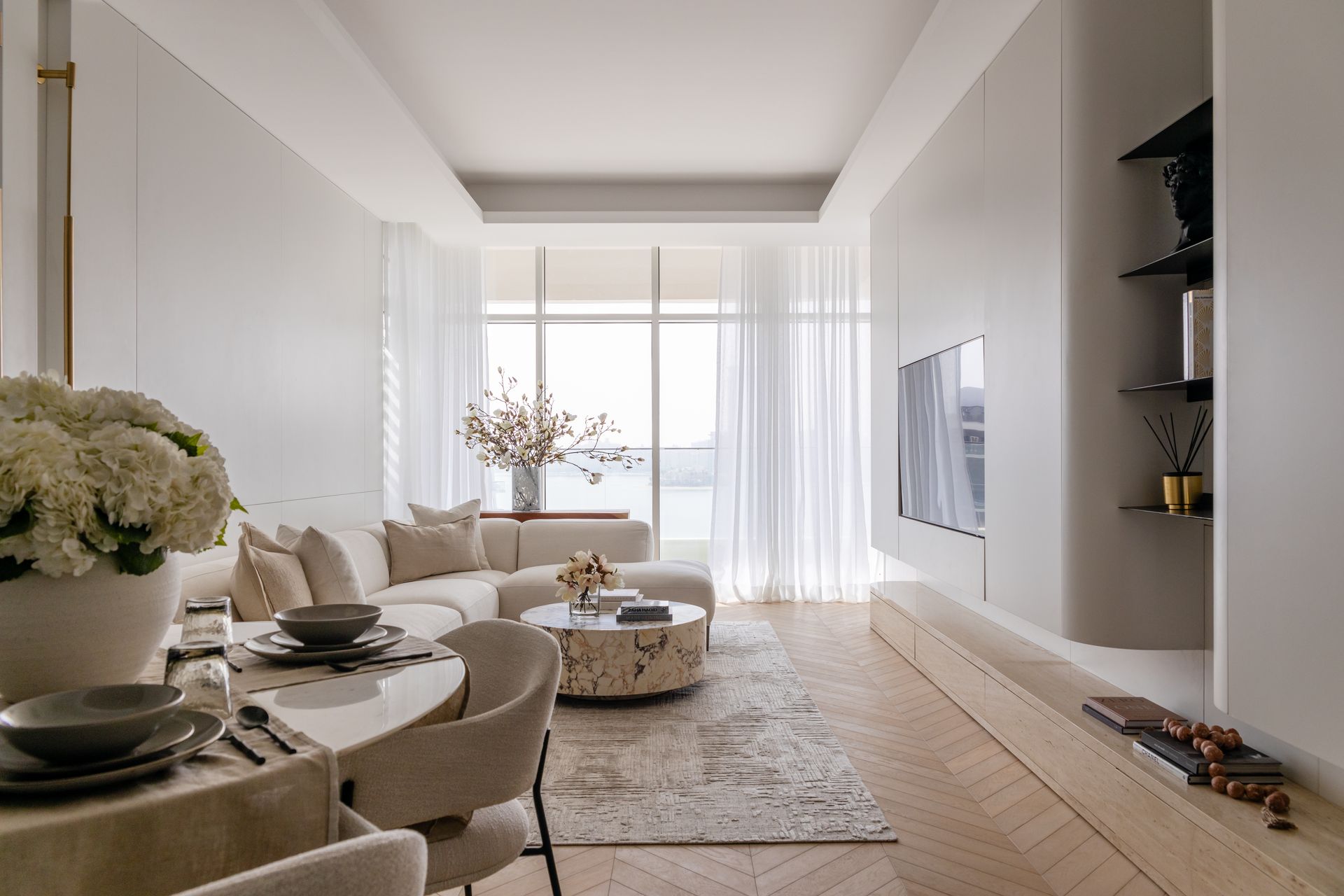
Popular Posts
